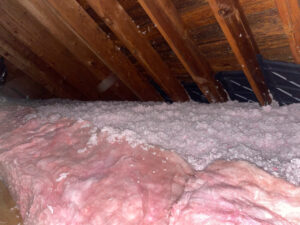
Winter is nearly here! Besides bundling up in a bulky sweater and laying next to a space heater, here is a list of other measures you can take to stay warm this winter all while saving you heat and energy costs.
Lower the thermostat
When you leave your home overnight or even if you’re just going to bed, lowering the thermostat for as little as 8 hours a day can save you up to 10% on your heating bill according to the Department of Energy. Try keeping the thermostat around 68 degrees during the day and lowering it to the low 60s before you go to bed. Just be sure to add a few extra blankets!
You can also invest in a programmable thermostat, which makes these adjustments for you or can allow you to control your thermostat from your phone. Check out the top picks for the best programmable thermostats for 2020 here.
Take advantage of sunlight
If you have south-facing windows, take advantage of the natural light and open your curtains for some natural heat. When the sun isn’t out, keeps your curtains closed. Using thermally insulated curtains is another way to help! According to home decor specialists at Deconovo, thermal curtains are a relatively inexpensive way to control drafts, reduce heat loss by up to 25% in the winter and reduce solar gain by 33% in the summer.

Reduce use of your fireplace, use your ceiling fan instead
You may think starting a fire in the fireplace would do the opposite of losing your heat, however, fireplaces usually only heat one room and the remaining heat is lost through the chimney. Make sure your damper is closed when you aren’t actively using your fireplace.
Instead, if you have a ceiling fan, try reversing to a counter-clockwise setting in order to pull heated air down.
Shut doors in rooms you aren’t using
If you don’t use certain rooms in your house, close the doors. According to Dave Ramsey, keeping doors closed will keep a majority of the heat trapped in that room and will prevent your heating system from constantly pumping out warm air. Plus, you can use door draft stoppers or pick up some weatherstripping material for drafty doors that connect to the outdoors such as a garage or back doors.
Replace filters
You should be checking your HVAC filter periodically and plan on cleaning or changing the filter roughly every 3 months, especially if you have someone in your home with asthma, allergy issues, or have any young children or pets. If your filter is covered in pet hair, dust, and allergens, your HVAC system will have to work harder for longer and even has a risk of failing. The EPA recommends using a filter with at least MERV 8 in order to meet indoor air quality standards. (The higher the MERV number, the finer the filtration). Here is a guide to help you find the right air filter for your system.

Photo provided by iStock
Use LED holiday lights
Switching from incandescent to LEDs for your holiday lights can save you energy and money! LEDs last longer, don’t get hot and can offer long term savings. Check out our previous blog to find out more.
Get an energy audit!
Other energy saving tips include sealing leaky ducts, inspecting your heating system, or installing insulation. One of the easiest ways to tackle all these problem areas is by scheduling an energy audit. Having an energy audit conducted on your home can help you specifically pinpoint which areas of your home are losing heat. You could also save money on rebates all while knowing the work done on your home will be done professionally and quickly.

Want to schedule an energy audit? Contact us here or call us at 202-557-9200







